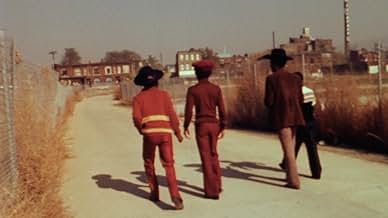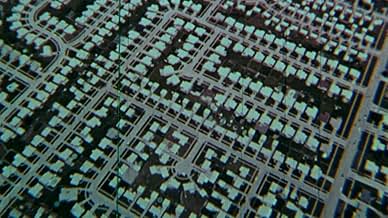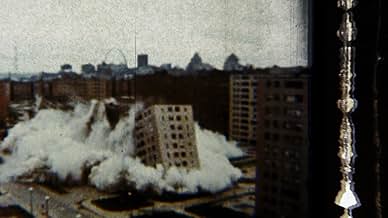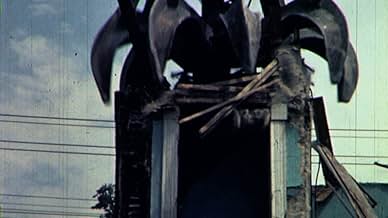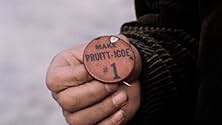Agrega una trama en tu idioma2011 "The Pruitt-Igoe Myth" explores the rise & fall of titular housing complex in St. Louis, examining racism & gov. Policies through interviews with former residents & historical footage. ... Leer todo2011 "The Pruitt-Igoe Myth" explores the rise & fall of titular housing complex in St. Louis, examining racism & gov. Policies through interviews with former residents & historical footage. Ft racism, urban poverty & inequality in America.2011 "The Pruitt-Igoe Myth" explores the rise & fall of titular housing complex in St. Louis, examining racism & gov. Policies through interviews with former residents & historical footage. Ft racism, urban poverty & inequality in America.
- Dirección
- Guionistas
- Elenco
- Premios
- 2 premios ganados y 2 nominaciones en total
Irvin Dagen
- Self - St. Louis Housing Authority
- (material de archivo)
Elmer Fiedler
- Self - Black Jack Baptist Church
- (material de archivo)
- (as Rev. Elmer Fiedler)
Robert Schuchardt
- Self - Zoning Commission Chairman
- (material de archivo)
- (as Dr. Robert Schuchardt)
- Dirección
- Guionistas
- Todo el elenco y el equipo
- Producción, taquilla y más en IMDbPro
Opiniones destacadas
The movie includes fascinating archival footage and interviews with five former residents of the public housing development. Some of these residents talked about the joyful experiences they had there, while others told harrowing stories. One of the most interesting things was listening to why they moved to the project initially. They told of how exciting it was to get into a modern development.
The movie also suggests some causes for the decline of the project, such as population loss in St. Louis, lack of funding for maintenance, and the loss of manufacturing jobs to the suburbs. When I discussed the movie with friends afterwards, we remained unsure in our speculation about the true causes.
The movie also suggests some causes for the decline of the project, such as population loss in St. Louis, lack of funding for maintenance, and the loss of manufacturing jobs to the suburbs. When I discussed the movie with friends afterwards, we remained unsure in our speculation about the true causes.
The Pruitt-Igoe Myth is a documentary that tries to zero in on just why the massive public project went so quickly from being an modern masterpiece to an absolute hell in such a short amount of time. Architects, urban planers, sociologist, and politicians have all weighed in on why the housing project failed, but no one can pin point the exact problem. This documentary aims to step back from the project and look at the city of St. Louis as a whole. Urban Flight and the lack of jobs and support from the city are pointed to instead.
The Pruitt-Igoe Myth means well. All too often, the reason for the project's demise is pointed to the poor that lived that. That they couldn't have nice things and keep up with them. The documentary, however, gives those people a voice. Throughout the film, people who lived in the community speak highly of their time there during what seemed to be golden years. Stories of love, union, and community run rampant. But that almost comes to the film's fault. We know whose side the film makers are on. And we only get the human story and not the other things that lead to the end. We aren't told about the skip-stop elevators, the condensing of physical space, or the fight for mixed housing. We hear a majority of human stories.
Luckily, the interviewees paint a terrific and chilling picture of their experiences in the community. Even years later, a woman is brought to tears recounting how the people of the projects were viewed. Also a bonus are the massive amounts of pictures and videos looking back to a time we've all forgotten.
The Pruitt-Igoe Myth is a great documentary that feels incomplete. Like having pancakes without bacon and eggs, what you get out of the movie is delicious...but you feel like you're missing something.
The Pruitt-Igoe Myth means well. All too often, the reason for the project's demise is pointed to the poor that lived that. That they couldn't have nice things and keep up with them. The documentary, however, gives those people a voice. Throughout the film, people who lived in the community speak highly of their time there during what seemed to be golden years. Stories of love, union, and community run rampant. But that almost comes to the film's fault. We know whose side the film makers are on. And we only get the human story and not the other things that lead to the end. We aren't told about the skip-stop elevators, the condensing of physical space, or the fight for mixed housing. We hear a majority of human stories.
Luckily, the interviewees paint a terrific and chilling picture of their experiences in the community. Even years later, a woman is brought to tears recounting how the people of the projects were viewed. Also a bonus are the massive amounts of pictures and videos looking back to a time we've all forgotten.
The Pruitt-Igoe Myth is a great documentary that feels incomplete. Like having pancakes without bacon and eggs, what you get out of the movie is delicious...but you feel like you're missing something.
I watched this last night for the first time and afterwords I just wanted to find a government employee and slap them. I have always been of the opinion that the government has no business in the business of housing. The tragic story of Pruitt Igoe proves that our government at every level is unable to manage housing and needs to get out of it. This documentary focuses on actual residents of the projects who tell the most interesting stories of the years they spent living there. Many of their memories are happy ones of when the project was brand new and that the residents did appreciate the modern apartments they had. The problem was the completely stupid welfare policies, funding policies and many structural features of the buildings themselves. Had the government kept families together instead of ripping them apart and kept up on the maintenance and security budgets these apartments might still be there today providing much needed housing. The vintage file footage of the projects, especially the interiors was very cool and interesting. I came away with a much better understanding of what the issues were contributing to the failure of the projects. This is a must see for anyone interested in the history of public housing in America.
8celr
This is a fascinating and excellent documentary about the collapse of a public housing high-rise project in St. Louis, MO. Pruitt-Igo, a massive block of high-rise apartments was supposed to offer hope to the poor living in dismal slums. It was typical of similar disasters in other cities, for example Cabrini-Green and Robert Taylor in Chicago and ones in the Bronx.
At first the residents were happy to be able to move out of the slums which were being torn down and into the modern, clear, cheerful apartments of Pruitt-Igoe. Former residents who were there at the beginning in the 1950's remember with nostalgia being able to live for the first time in a clean, bright apartments. Evidently at the beginning the residents got along splendidly. The architecture of these high-rises has been criticized for being inhuman and blamed for causing the monstrous social problems which ensued, but evidently at first the architecture didn't effect people that way. Children played safely in the halls and moms communicated freely between apartments.
There were from the beginning some rather annoying glitches, the biggest of which was a rule that men couldn't live in the apartments. This meant that husbands had to either live apart from their wives and children or stow away in their wives' apartments. It's hard to see why rules like this were created, but easy to see what the ultimate effect would be. Poor families would be split up and an epidemic of out-of-wedlock births would follow. But that would be farther down the road and there are numerous other forces contributing to the epidemic of out-of-wedlock births.
Another short-sighted rule was a law that forbid increases in rent. Since rent went to maintenance there wasn't enough money to maintain those huge high-rises. Elevators jammed, the stairwells became toilets. Jobs left the city and population left at the same time. Whites fled to the suburbs leaving Pruitt-Igoe almost entirely black. The towers became shabby and dilapidated. Vandals and criminals moved in and in a couple of decades what started out as a bright and noble crusade to help the needy crashed to the ground in flames.
The film wants to blame the particular conditions of St. Louis at the time for the destruction of Pruitt-Igoe, but although those conditions were the proximate cause of the catastrophe, the entire plan was built on quicksand from the beginning. Because it was a huge government project which required huge amounts of money to maintain there was no way that such a project could be successfully centrally planned and still function. It was just too big, there were just to many false assumptions, and just too many political considerations at work.
This is true for public housing everywhere. Almost anywhere you go you'll find that public housing, whereas it might not be as bad as Pruitt-Igoe, is still a breeding ground for crime and social dysfunction. Though the film makers try to deny the obvious, government attempts at social engineering are doomed to fail by their very nature. Lumbering government bureaucracies can't adapt to changing conditions. Rules and regulations created by bureaucrats look good in theory but are unworkable in practice. The idea that an entire dependent class might be created as a result of the best of intentions was never considered by the planners.
In some cities, like Chicago, the black out-of-wedlock birthrate is now approaching 85%. Some could argue, with just cause, that it is the nanny state programs of the Great Society that are directly responsible. Only a liberal big-government project could fail in such a spectacular way.
At first the residents were happy to be able to move out of the slums which were being torn down and into the modern, clear, cheerful apartments of Pruitt-Igoe. Former residents who were there at the beginning in the 1950's remember with nostalgia being able to live for the first time in a clean, bright apartments. Evidently at the beginning the residents got along splendidly. The architecture of these high-rises has been criticized for being inhuman and blamed for causing the monstrous social problems which ensued, but evidently at first the architecture didn't effect people that way. Children played safely in the halls and moms communicated freely between apartments.
There were from the beginning some rather annoying glitches, the biggest of which was a rule that men couldn't live in the apartments. This meant that husbands had to either live apart from their wives and children or stow away in their wives' apartments. It's hard to see why rules like this were created, but easy to see what the ultimate effect would be. Poor families would be split up and an epidemic of out-of-wedlock births would follow. But that would be farther down the road and there are numerous other forces contributing to the epidemic of out-of-wedlock births.
Another short-sighted rule was a law that forbid increases in rent. Since rent went to maintenance there wasn't enough money to maintain those huge high-rises. Elevators jammed, the stairwells became toilets. Jobs left the city and population left at the same time. Whites fled to the suburbs leaving Pruitt-Igoe almost entirely black. The towers became shabby and dilapidated. Vandals and criminals moved in and in a couple of decades what started out as a bright and noble crusade to help the needy crashed to the ground in flames.
The film wants to blame the particular conditions of St. Louis at the time for the destruction of Pruitt-Igoe, but although those conditions were the proximate cause of the catastrophe, the entire plan was built on quicksand from the beginning. Because it was a huge government project which required huge amounts of money to maintain there was no way that such a project could be successfully centrally planned and still function. It was just too big, there were just to many false assumptions, and just too many political considerations at work.
This is true for public housing everywhere. Almost anywhere you go you'll find that public housing, whereas it might not be as bad as Pruitt-Igoe, is still a breeding ground for crime and social dysfunction. Though the film makers try to deny the obvious, government attempts at social engineering are doomed to fail by their very nature. Lumbering government bureaucracies can't adapt to changing conditions. Rules and regulations created by bureaucrats look good in theory but are unworkable in practice. The idea that an entire dependent class might be created as a result of the best of intentions was never considered by the planners.
In some cities, like Chicago, the black out-of-wedlock birthrate is now approaching 85%. Some could argue, with just cause, that it is the nanny state programs of the Great Society that are directly responsible. Only a liberal big-government project could fail in such a spectacular way.
The Pruitt-Igoe housing development in St. Louis is the focus of this film, but it could have just as soon been Cabrini-Green in Chicago or any one of a number of similar projects across the American big cities. It's an exploration as to why these huge public housing projects became hellish instead of the paradises they were originally envisioned. Fortunately, the filmmakers don't pick any one or two simple answers but talk about the multitude of issues that led to the projects failing...and ultimately being demolished. Among the problems discussed in the film were the lack of jobs as businesses and middle classes migrated to the suburbs, the increase of violence and vandalism, lack of maintenance, segregation as well as the insane notion that in order to get public assistance that fathers could not remain in the home!
This documentary is depressing and few folks would enjoy watching it. Now I am NOT saying it's bad and it's good for folks to become familiar with the issues that come up in the film. But it's just not the sort of thing most people would choose to watch and is probably more a film that educators might show to sociology or other such classes in order to explain the failures of these programs. Interesting and well made...despite it being such a terrible story.
This documentary is depressing and few folks would enjoy watching it. Now I am NOT saying it's bad and it's good for folks to become familiar with the issues that come up in the film. But it's just not the sort of thing most people would choose to watch and is probably more a film that educators might show to sociology or other such classes in order to explain the failures of these programs. Interesting and well made...despite it being such a terrible story.
¿Sabías que…?
- TriviaNot Mentioned - The Pruitt-Igoe complex was designed by the architect Minoru Yamasaki (1913-1986) who also designed the World Trade Center and the main terminal at the St. Louis - Lambert International Airport.
- ConexionesReferenced in Target: St. Louis (2018)
- Bandas sonorasThe World is Changing
By Lavel Moore
Licensed by Numero Group, Chicago, IL
Selecciones populares
Inicia sesión para calificar y agrega a la lista de videos para obtener recomendaciones personalizadas
Detalles
Taquilla
- Total en EE. UU. y Canadá
- USD 44,883
- Fin de semana de estreno en EE. UU. y Canadá
- USD 4,721
- 22 ene 2012
- Total a nivel mundial
- USD 44,883
- Tiempo de ejecución1 hora 19 minutos
- Color
- Relación de aspecto
- 16:9 HD
Contribuir a esta página
Sugiere una edición o agrega el contenido que falta

Principales brechas de datos
By what name was The Pruitt-Igoe Myth (2011) officially released in Canada in English?
Responda

